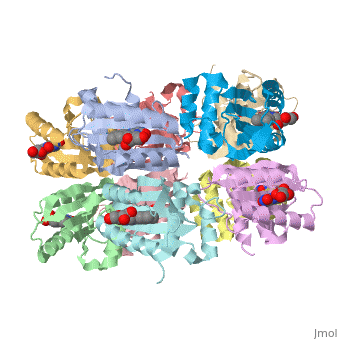Sandbox Reserved 310
| This Sandbox is Reserved from January 10, 2010, through April 10, 2011 for use in BCMB 307-Proteins course taught by Andrea Gorrell at the University of Northern British Columbia, Prince George, BC, Canada. |
To get started:
More help: Help:Editing |
| |||||||||
| 1x0p, resolution 2.00Å () | |||||||||
|---|---|---|---|---|---|---|---|---|---|
| Ligands: | |||||||||
| |||||||||
| |||||||||
| Resources: | FirstGlance, OCA, RCSB, PDBsum | ||||||||
| Coordinates: | save as pdb, mmCIF, xml | ||||||||
IntroductionIntroduction
The proteins containing sensors for blue light using FAD (BLUF) domains are one class of photoreceptor family that utilizes a flavin chromophore[1]. The other two classes include phototropins (LOV) and cryptochromes. The BLUF domain was first discovered in Rhrodobacter sphaeroides as the blue light photoreceptor involved in the repression of photosynthesis genes in AppA protein[1]. The BLUF domain is known to exist in many bacteria, including cyanobacteria.
One unique photosensing property of BLUF domain is a light induced spectral shift in the flavin absorption spectrum where the wavelength is longer by approximately 10nm[1]. In AppA this shift occurs quickly upon illumination and is slowly reversed upon return to darkness.
StructureStructure
BLUF domain is a [1].

